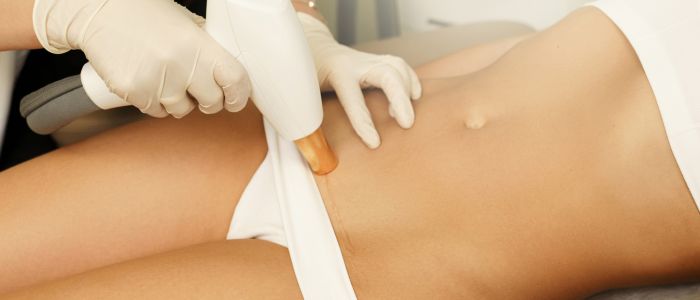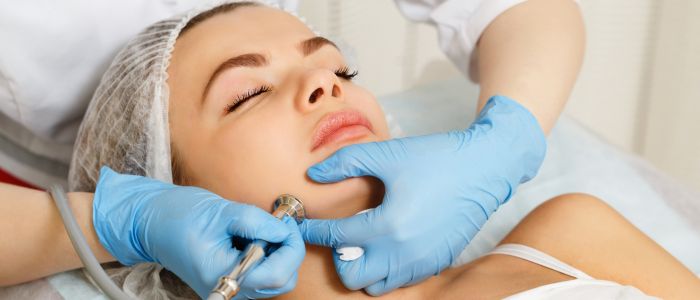
Table of Contents
- Guide to Scar Treatments – From Natural Remedies to Advanced Therapies
- Understanding Scars
- Types of Scars
- General Treatments for Scars
- Over-the-Counter Solutions
- Prescription Medications
- Professional Treatments
- Surgical Options
- Non-Surgical Scar Treatments
- Chemical Peels
- Microdermabrasion
- Laser Treatment
- Microneedling
- Cryotherapy
- Steroid Injections
- How to Prevent Scars from Forming
- Long-term Skin Care Tips
- Children and Scar Treatments
- When to Seek Professional Help
- FAQs about Treatments for Scars
- Further Reading about Scars
Guide to Scar Treatments – From Natural Remedies to Advanced Therapies
Scars form as a natural part of the healing process when the dermis, the thick layer of skin below the surface, is damaged. The body forms new collagen fibres to mend the damage, resulting in a scar. The appearance of a scar often depends on multiple factors including the nature of the injury, the direction of the wound, the blood supply to the area, the thickness and colour of your skin, and more.
In this blog, Chester Consultant Plastic Surgeon Anca Breahna offers her expert insights into the complex world of scar treatments, leveraging her extensive experience in plastic and reconstructive surgery.
Understanding Scars
Scars are not all alike, and understanding the types you have is the first step in finding the appropriate treatment. Hypertrophic scars are red and raised, remaining within the boundary of the original wound. Keloid scars are similar but extend beyond the initial injury area, sometimes growing over time. Atrophic scars create a dent or pit on the skin, commonly found with acne or chickenpox. Lastly, contracture scars result from burns and can affect muscles and nerves, potentially limiting movement.
Types of Scars
- Keloid Scars – These are the result of an overly aggressive healing process. They extend beyond the original injury. Over time, a keloid scar may hinder movement. Treatments include surgery to remove the scar, steroid injections, or silicone sheets to flatten the scar.
- Hypertrophic Scars – Similar to keloid scars, these are raised and red. They do not extend beyond the boundary of the injury. Treatments might include steroids to reduce inflammation or silicone sheets to flatten the scar.
- Atrophic Scars – These scars create a sunken area on your skin, which occurs when underlying structures such as muscle or fat are lost. This type of scarring is commonly associated with acne.
- Stretch Marks – Technically known as striae, stretch marks are caused when the skin is stretched rapidly (for example, during pregnancy), and are essentially a type of scar. You can minimise the appearance of stretch marks with topical treatments or laser therapy.
- Contracture Scars – If your skin has been burned, you may have a contracture scar. These scars tighten skin, which can impair your ability to move. Treatment usually involves surgery to remove the scar tissue. This helps to restore movement and may involve skin grafts.
- Acne Scars – These are found as a result of hormonal changes during pregnancy and puberty. They can range from deep pits to scars that are angular or wavelike in appearance. Treatment options depend on the severity of the scar and include chemical peels, microdermabrasion or laser surgery.
General Treatments for Scars
When managing scars, there are several general treatments you can consider. These range from over-the-counter solutions that you can easily purchase at most pharmacies to more specific prescription medications that a doctor might recommend depending on the severity and type of your scar. Here’s a deeper look at each of these options:
Over-the-Counter Solutions
For many people dealing with scars, over-the-counter treatments are the first line of defence. These products are readily available and can be used to treat a variety of scars, including those that are newly formed and relatively minor in appearance.
- Silicone Sheets and Gels: One of the most popular treatments includes silicone sheets and gels. These products work by creating a protective barrier over the scar, which helps to hydrate the area and reduce the scar’s visibility. They can be particularly effective for hypertrophic scars and keloids, flattening them over time and reducing redness.
- Hydration Ointments: Products containing ingredients like vitamin E and cocoa butter are marketed for their ability to keep the scar tissue hydrated. While the evidence supporting their effectiveness in reducing scar appearance is mixed, they can help to soothe and moisturise the skin, potentially making the scar less noticeable.
- Onion Extract Creams: Creams containing onion extract, such as Mederma, are another non-prescription option that some people use to improve the texture and condition of scarred skin. These creams can help in softening and flattening the scar, making it less visible.
Prescription Medications
If your scars are more severe or do not respond well to over-the-counter treatments, your doctor may prescribe stronger medications. These prescription options are formulated to address more problematic scars and can provide noticeable improvements:
- Topical Retinoids: Retinoids help to speed up cell regeneration and can be effective in improving the skin’s surface. They work by gradually diminishing the scar’s appearance and are typically used in the treatment of acne scars and other facial scars.
- Corticosteroid Creams: For raised scars like keloids or hypertrophic scars, corticosteroid creams can be prescribed to help reduce inflammation. When applied to the affected area, these creams can help to flatten the scar by slowing down collagen buildup.
- Bleaching Creams: In cases where scars are pigmented, bleaching creams containing hydroquinone might be used. These creams can lighten the scar tissue, making it less noticeable compared to the surrounding skin.
Professional Treatments
For those dealing with more severe scarring, professional treatments might be necessary. These treatments, which include surgical options, laser therapies, and injections, are carried out by Anca. Each type of treatment comes with its own set of potential benefits and is chosen based on the specific characteristics of the scar and your skin type.
Surgical Options
Surgical treatment of scars may involve various procedures aimed at improving the appearance of scars. Here are some of the common surgical methods:
- Scar Revision: This procedure involves removing the scar tissue and carefully rejoining the skin. For larger scars, a technique called Z-plasty may be used, where the skin is shuffled around to help minimise the visual impact of the scar as it heals.
- Skin Grafts: In cases where scars have caused extensive skin loss, as can happen with burns, skin grafts may be necessary. This involves taking skin from another part of the body and transplanting it to the area of the scar.
- Excision: Smaller scars might be completely cut out and the area closed up with tiny stitches, leaving a neater, less noticeable scar.
Non-Surgical Scar Treatments
For many individuals dealing with scars, non-surgical options can be effective for improving the appearance of scars without the need for invasive procedures. These treatments usually involve less downtime and can be less intimidating than surgical options. Here’s a look at various non-surgical scar treatment methods that are commonly used:
Chemical Peels
This treatment involves applying a chemical solution to the scarred area, which causes the outer layers of skin to peel off, helping to reduce deeper scars as new skin forms:
- Light Peels: Using mild acids like alpha-hydroxy acid, light peels are gentle and can be used for minor texture and colour improvements.
- Medium to Deep Peels: These use stronger acids and can target more significant skin issues, including deeper scars. They do require some downtime and carry a greater risk of side effects, such as skin discolouration.
Microdermabrasion
Microdermabrasion is a minimally invasive procedure that involves sanding down the outer layers of skin with a special instrument. It’s particularly good for superficial scars and can help to make the skin smoother and more even in texture:
- Procedure Details: During the treatment, tiny exfoliating crystals are sprayed onto the affected area, or a diamond-tipped wand is used to remove dead skin cells.
Laser Treatment
Non-ablative laser treatments can also be used for scar management without removing any skin:
- Fractional Lasers: These lasers treat small zones beneath the skin’s surface without affecting the top layer, promoting collagen production and making the skin smoother.
- Pulsed-Dye Lasers: Often used for red scars, these lasers target blood vessels and can help reduce redness and improve the overall appearance of scars.
Microneedling
Microneedling involves using small needles to create tiny punctures in the skin, which can help to induce collagen production and lead to smoother skin:
- Effectiveness: This method is particularly useful for treating acne scars and other types of indented scars. It generally requires multiple sessions to see significant improvements.
Cryotherapy
Cryotherapy involves freezing the scar tissue to help reduce its size, particularly in the case of raised scars like keloids:
- Treatment Process: A small amount of liquid nitrogen is applied to the scar, which gradually reduces the scar’s height and fades its colour.
Steroid Injections
For hypertrophic scars and keloids, steroid injections are an effective non-surgical option to help reduce scar tissue buildup, ease discomfort, and flatten the scar.
These non-surgical methods provide a broad range of options for patients looking to reduce the visibility of scars with minimal downtime and less risk than surgery. Consulting with Anca is important to determine the best approach based on the type of scar and your skin characteristics.
How to Prevent Scars from Forming
Proper wound care is essential to prevent scars or reduce their severity. Always clean a new wound with water or a gentle cleanser to remove any debris and bacteria. Applying a thin layer of petroleum jelly can keep the area moist, which helps prevent a scab from forming. Scabs can delay healing and increase the likelihood of a scar remaining. Cover the wound with a sterile bandage to protect it from irritation and infection.
Long-term Skin Care Tips
Protecting your skin from the sun is vital to reduce the visibility of scars. UV exposure can darken scars and make them more noticeable. Use a broad-spectrum sunscreen with an SPF of 30 or higher to cover scars when you’re outdoors. Additionally, regular moisturising can help keep the scar and surrounding skin soft, reducing the development of a rough, raised scar.
Children and Scar Treatments
Children’s skin is more sensitive than adults’, requiring special attention when treating scars. Use gentle methods and always consult a paediatric dermatologist before starting any treatments. Silicone gels and sheets can be safe options that are less invasive and painful than other treatments.
When to Seek Professional Help
If your child’s scar is large, growing, or causing them discomfort or restricted movement, it is important to consult a healthcare provider. Early intervention can prevent scars from becoming a bigger problem as they grow and their skin stretches.
FAQs about Treatments for Scars

What are the potential risks associated with scar treatment procedures?
The risks depend on the specific treatment but generally include infection, changes in skin colour, allergic reactions, and potential worsening of the scar appearance. Surgical treatments might carry additional risks such as bleeding, pain, and extended recovery times. Non-invasive methods like laser treatments and chemical peels might cause temporary discomfort, redness, and swelling. It’s important to discuss all potential risks with Anca before starting any new treatment.
How effective are silicone sheets and gels in treating scars?
Silicone sheets and gels are widely regarded as an effective treatment for reducing the thickness and colour of hypertrophic scars and keloids. They work by creating a moist healing environment around the scar which helps to decrease collagen production and improve the scar’s appearance. Consistent use as directed, usually over several months, is necessary to see significant improvement.
Can massage therapy be used to improve the appearance of scars?
Yes, massage therapy can be beneficial for certain types of scars, especially those that are thick and raised, such as hypertrophic scars. Massaging the scar helps to break down the thick scar tissue and promote better circulation, which can soften the scar and make it less prominent. It’s best to wait until the wound has fully healed before starting massage therapy and to consult with a professional to learn the proper techniques.
What role does sun protection play in scar management?
Protecting scars from the sun is vital as UV exposure can permanently darken scars, making them more noticeable compared to the surrounding skin. It’s recommended to cover scars with a strong SPF sunscreen or protective clothing whenever exposed to sunlight, especially during the first year of healing when the scar is still maturing.
Are there any effective natural remedies for fading scars?
While many natural remedies are touted for scar treatment, aloe vera and onion extract have shown some promise in scientific studies. Aloe vera is known for its anti-inflammatory and soothing properties which can help reduce scar redness and swelling. Onion extract, commonly found in over-the-counter scar treatment products, may also help improve scar texture and appearance by controlling collagen production. However, results can vary, and these treatments might be more effective when combined with other therapies.
Medical References about Scars
- Scars: Treatment and Cause – Cleveland Clinic: https://my.clevelandclinic.org/health/symptoms/21027-vaginal-dryness
- Keloid Scar – Medline Plus: https://medlineplus.gov/ency/article/000849.htm
- Scars: Diagnosis and treatment – American Academy of Dermatology: https://www.aad.org/public/diseases/a-z/scars-treatment
- Scar Treatments: Types of Scars and Their Treatments – WebMD: https://www.webmd.com/skin-problems-and-treatments/guide/scar-treatment
- Scars: Signs and symptoms – American Academy of Dermatology: https://www.aad.org/public/diseases/a-z/scars-symptoms
Further Reading about Scars
- Read more about Scars after Labiaplasty
- Read more about What Can Be Done to Reduce Eyelid Surgery Scars?
- Read more about How to Get Rid of Old Scars
- Read more about The Complete Guide to Breast Implant Scars and How to Minimise Them
- Read more about Silicone Strips for Cosmetic Surgery Scars
- Read more about Skin Condition – Scars








